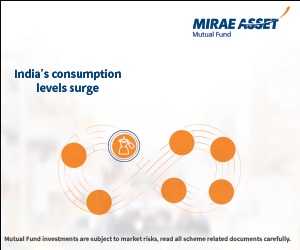Why invest in Principal Large Cap Fund NFO

Principal Mutual Fund has launched a large cap fund NFO. As per SEBI’s mandate large cap funds need to invest at least 80% of their assets in the Top 100 companies by market capitalization.
Principal Large Cap Fund will invest 80 – 85% of its assets in Indian large cap companies. The scheme will also invest up to 15% in 500 large cap companies (minimum market cap of $50 billion) in the US (S&P 500). In this article, we will discuss about large cap investing, benefits of investing in US large cap stocks and more specifically about the Principal Large Cap Fund.
Why invest in large cap?
- Large cap companies not only dominate the stock market in terms of market capitalization, they are also leaders of their respective industry sectors in terms of sales and profits.
![Mutual Funds - Large cap companies not only dominate the stock market also leaders of their respective industry sectors in terms of sales and profits Mutual Funds - Large cap companies not only dominate the stock market also leaders of their respective industry sectors in terms of sales and profits]()
Source: Principal MF (1) As on 30th June 2020 (2) As on 31st July 2020. Disclaimer: The above analysis is for illustration only. Equity as an asset class is subject to market risks. Past performance may or may not be sustained in the future.
- Large cap stocks are relatively less volatile than midcap and small cap stocks and usually generate more stable returns in the long term.
![Mutual Funds - Large cap stocks are relatively less volatile than midcap and small cap stocks and usually generate more stable returns in the long term Mutual Funds - Large cap stocks are relatively less volatile than midcap and small cap stocks and usually generate more stable returns in the long term]()
Source: Principal MF as on 31st July 2020. Disclaimer: The above analysis is for illustration only. Equity as an asset class is subject to market risks.Past performance may or may not be sustained in the future.
- Bear markets can wipe out several years of gains and cause investor distress. Large cap stocks are more resilient than midcap and small cap stocks in deep corrections. The chart below shows the risk data (market corrections) of Nifty 100 TRI (large cap), Nifty Midcap 100 TRI (midcap) and Nifty Small Cap 100 TRI over the past 15 years.
You can see that downside risks are significantly lower in large cap. It has also been observe that large cap stocks bottom out faster compared mid and small cap stocks.
![Mutual Funds - Risk data (market corrections) of Nifty 100 TRI (large cap), Nifty Midcap 100 TRI (midcap) and Nifty Small Cap 100 TRI Mutual Funds - Risk data (market corrections) of Nifty 100 TRI (large cap), Nifty Midcap 100 TRI (midcap) and Nifty Small Cap 100 TRI]()
Source: Principal MF as on 31st July 2020. Disclaimer: The above analysis is for illustration only. Equity as an asset class is subject to market risks.Past performance may or may not be sustained in the future.
- Large cap companies have much larger numbers of free floating shares compared to midcap and small cap where promoter shareholding is much higher. Stocks which have low free float are less liquid. Large cap stocks have relatively low liquidity risk in volatile markets.
- Large cap stocks enjoy high FII and DII ownership. As a result they have broader research coverage by analysts. Due to relatively less research coverage, midcap and small cap stocks may have risks which are unknown to investors.
- Large cap stocks are proven wealth creators by virtue of their position of market leadership.
Why invest in US large cap stocks?
- International investing is not popular among retail investors in India. However, international investing, especially US stocks can enable investors to diversify risk and get more stable returns from their portfolios. The US is not only one of the best performing markets in the world at this juncture, the S&P 500 (index of 500 large cap companies in the US) in INR terms has outperformed the Nifty over multiple years.
You can see in the chart below that over the last 10 years, S&P 500 (INR) outperformed Nifty 50 TRI and Nifty 100 TRI in 7 calendar years. Adding US stocks to your portfolio will provide more stability and potentially higher returns.
![Mutual Funds - S&P 500 (INR) outperformed Nifty 50 TRI and Nifty 100 TRI in 7 calendar years Mutual Funds - S&P 500 (INR) outperformed Nifty 50 TRI and Nifty 100 TRI in 7 calendar years]()
Source: Principal MF as on 31st July 2020. Disclaimer: The above analysis is for illustration only. Equity as an asset class is subject to market risks.Past performance may or may not be sustained in the future.
- US large companies are global leaders and are globally recognized brands. They dominate their respective industries. Purely as an example, 5 largest market cap stocks in S&P 500 are Microsoft, Apple, Google, Amazon and Facebook are not only among the best known brands in the world, most of us are consumers of these brands. The market cap of the 3 largest US companies is more than 12 times that of 3 largest Indian companies. In the last 5 years (as on 31st Dec 2019), the earnings CAGR of the 5 largest US companies was in the range 13 of 42% (Source: macrotrends.net), compared to low single digit earnings growth of Nifty 50 (Source: NSE).
- The exchange rate situation of the INR is also a good reason to diversify into US stocks. Over the past several years INR has been declining against USD and may continue to decline in the near to medium term. Over the past 10 years, INR depreciation itself would have contributed a significant portion of Rupee returns from S&P 500.
- A composite portfolio of Indian large cap stocks (85% portfolio weight) and US large cap stocks (15% portfolio weight) produces superior risk adjusted returns compared to Indian large cap indices (Nifty 50 TRI and Nifty 100 TRI).
![Mutual Funds - A composite portfolio of Indian large cap stocks and US large cap stocks Mutual Funds - A composite portfolio of Indian large cap stocks and US large cap stocks]()
Source: Principal MF as on 31st July 2020. Disclaimer: The above analysis is for illustration only. Equity as an asset class is subject to market risks.Past performance may or may not be sustained in the future.
- A composite portfolio of Indian large cap stocks (85% portfolio weight) and US large cap stocks (15% portfolio weight) produces superior performance consistency compared to Indian large cap indices (Nifty 50 TRI and Nifty 100 TRI).
![Mutual Funds - Composite portfolio of Indian large cap stocks and US large cap stocks produces superior performance consistency compared to Indian large cap indices Mutual Funds - Composite portfolio of Indian large cap stocks and US large cap stocks produces superior performance consistency compared to Indian large cap indices]()
Source: Principal MF as on 31st July 2020. Disclaimer: The above analysis is for illustration only. Equity as an asset class is subject to market risks.Past performance may or may not be sustained in the future.
Disclaimer: The above analysis is for illustration only. Past performance may or may not be sustained in the future..
Disclaimer: The above analysis is for illustration only. Past performance may or may not be sustained in the future. Equity investment decisions should not be based purely on currency risks. You should consider all risk factors and consult with your financial advisor before investing.
About Principal Large Cap Fund – Investment Strategy
- The scheme will have a diversified portfolio of 50 – 60 companies
- 80 – 85% of the scheme assets will be invested in Indian large cap companies (top 100 companies by market cap)
- Up to 15% of the scheme assets will be invested in US large cap companies (minimum market cap of $50 billion). We had discussed earlier that a composite portfolio of 85% Indian and 15% US large cap stocks produces superior risk adjusted returns
- The scheme will invest across industry sectors and stock selection will be bottoms up
- The investment strategy will be oriented more towards growth stocks compared to value stocks
- Earnings growth and return ratios will be the preferred metrics for stock selection
- The fund managers will focus on business models and management quality
- The fund managers will actively manage risk to reduce portfolio volatility
Who should invest in this NFO?
- Investors who want to get capital appreciation over long investment horizon
- Investors who have moderately high risk appetites and do not want to take very high risks
- Investors who want to have exposure predominantly in large cap stocks
- Investors who also want to get exposure to US stocks in their portfolios
- Investors who have long investment horizons. In our view, you should have minimum 5 year investment horizon for this fund
- New investors can invest in this NFO since volatility of this scheme will potentially be lower than schemes which have significant allocations to midcap and small caps
Why invest in this NFO?
- The current economic environment in the back-drop of COVID-19 pandemic is likely to result in significant earnings risk for companies. Large cap companies by virtue of their market share leadership, competitive moats and financial strength are better positioned to withstand this crisis and emerge stronger
- Though the COVID-19 crisis has resulted in a global economic recession, the global economy (including India) is expected to bounce back in 2021 and beyond. While the Indian stock market has recovered from the March lows, stronger recovery is expected when economic prospects improve
- India’s market cap to GDP ratio has declined sharply from 79% in FY 2019 to 54% in FY 2020. The market cap to GDP ratio is well below the historical average of 74% and close to levels we saw during Global Financial Crisis of 2008. Extrapolating past performance, we think that current market levels provide attractive investment opportunity over a sufficiently long investment tenure
- Triple advantage of investing in domestic large cap stocks, US large cap stocks and foreign exchange risk diversification. Principal large cap fund provides both geographical and currency diversification. The back-testing of the asset allocation strategy shows that it can generate superior risk adjusted returns.
- Principal Mutual Fund has a strong long term performance track record. The fund house can benefit from Principal’s global investment experience, including access to advice and research from the US based PGI team. The fund managers of this scheme, Sudhir Kedia and Anirvan Sarkar have combined investment experience of more than 20 years.
How to invest in this NFO?
Principal Large Cap Fund NFO will open for subscription on 28th September 2020 and close on 20th October 2020. The minimum subscription amount is Rs 5,000.
You can also invest in the scheme through SIP (minimum Rs 500 for at least 12 instalments). If you are concerned about volatility, you can also invest through STP (minimum Rs 1,000 for at least 12 instalments).
You can also take advantage of Principal’s SMART Facility, whereby your lump sum investment will be deployed in the NFO in 4 tranches (25% each) over 4 months, with diminishing balance invested in Principal Cash Management Fund.
You can also take advantage of Principal’s MY GAIN facility, whereby you can switch from this scheme to any Principal scheme whenever a target rate of return, as specified by you is achieved.
You can get more information about these facilities from Principal MF’s website. You should read the scheme information document before investing and consult with your financial advisor if you need clarification about the suitability of this scheme for your financial needs.
Mutual Fund Investments are subject to market risk, read all scheme related documents carefully.
Queries
-
What is the benefit of mutual fund STP
Aug 29, 2019
-
How much to invest to meet target amount of Rs 2 Crores
Aug 26, 2019
-
Can I achieve my financial goals with my current mutual fund investments
Aug 24, 2019
-
Can you tell me return of various indices
Aug 19, 2019
-
What would be the post tax return on different investments
Aug 18, 2019
-
Which Principal Mutual Fund scheme will be suitable for my retirement corpus
Aug 16, 2019
-
What is the minimum holding period for availing NCD interest
Aug 4, 2019
Top Performing Mutual Funds
Recommended Reading
Fund News
-
Edelweiss Mutual Fund launches Edelweiss BSE Internet Economy Index Fund
Apr 25, 2025 by Advisorkhoj Team
-
Bajaj Finserv Mutual Fund launches Bajaj Finserv Nifty 50 Index Fund
Apr 25, 2025 by Advisorkhoj Team
-
SBI Mutual Fund launches SBI Income Plus Arbitrage Active FOF
Apr 23, 2025 by Advisorkhoj Team
-
Motilal Oswal Mutual Fund launches Motilal Oswal Infrastructure Fund
Apr 23, 2025 by Advisorkhoj Team
-
Groww Mutual Fund launches Groww Gilt Fund
Apr 23, 2025 by Advisorkhoj Team



















